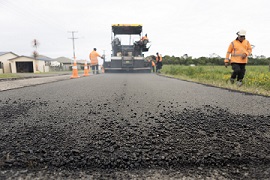Imagine managing a data crush load!
15/01/2024
"Crush load" is a phrase used by design engineers to describe the moment a train is filled to the max with passengers.
Think of a service leaving Olympic Park Station in Sydney at the end of a football match.
All the seats are filled and every inch of floor space has someone standing over it. That’s a crush!!
Still, everything on the train has to work perfectly - aircon, doors, suspension, braking/accelerating.
The amount of data that Downer RTS Digital receives from the train is like a data crush load. With tens of thousands of signals being logged every minute from over 180 trains on the network, we have terabytes of data available!

Figure 1: Well-structured data ingest, egress and management of workflows across multiple data points on the rail network is vital to ensure safe and reliable insights are actioned in a timely manner.
Figure 2: Smart trains mean more data!
To help manage such voluminous amounts of data, we have our very own team of data scientists who provide the engineering team with adjective insights. Coupled with the mathematical and programming backing to cleverly find patterns and correlations in the data, they can predict when a train is going to break down or when maintenance can be conditional instead of routinely managed. This results in significant cost savings.
However, building a predictive model can be quite slow. Traditionally it starts with a known type of failure after an incident. For example, the Auxiliary Power Supply overheating or a particular door jamming too often. The train breaks down, and the engineer calls on the help of a data scientist to process the handful of signals that correlate with the failure. Downer process the signals and fine tune the model until it accurately predicts the next time the failure may occur. This whole process to build one model can take weeks or months.

Figures 3 and 4: Examples of current APS monitoring, measuring, reporting to support and drive advanced predictive models.
It’s an admirable task that we enjoy. By using machine learning and advanced statistics, the data can tell us what the general public don’t see.
But is there a way that we can scale up the process? Instead of processing a few signals at a time, can we tap into those tens of thousands of signals at once? And perhaps observe and predict failures that have not yet occurred? We think the answer lies in a statistical technique called anomaly detection. This is a way of finding patterns in unlabelled (or not yet failed) data.
At Downer we're lucky enough to have intelligent people and smart tools to harness this data; distil it and read between the numbers to ensure that a passenger’s next trip from a football match in Sydney Olympic Park, will be safe, timely and enjoyable.
Key takeaways:
1. Downer’s RTS, data scientists are also rail engineers who are cross skilled to expedite and action data alerts that support reliable condition-based maintenance. Reducing the time and cost of traditional routine-based maintenance.
2. Downer has a crush load of data – which often makes it a challenge in knowing where to start when building a predictive model. Is there a way to better utilise it or gain insight from every single data point?
3. We think the answer is in anomaly detection, which is a way to finding patterns in unlabelled data points or alerts.


Categories
Related articles
-
 29/10/2024
29/10/2024Downer Collaborates with FACET on eFuel Plant Project
Read more -
 27/10/2023
27/10/2023Road Science launches Bio Bind - a pioneering innovation for sustainable roading
Read more -
 29/05/2023
29/05/2023Putting eyes on our roads
Read more -
 13/03/2023
13/03/2023Researchers paving the way for electrified roads
Read more -
 27/01/2023
27/01/2023Sustainable innovation at the Masters Games
Read more -
 15/11/2022
15/11/2022Downer and Royal Australian Navy leverage cutting-edge technology in successful trial
Read more -
 15/11/2022
15/11/2022Downer invests in emerging augmented reality technology to enhance operational efficiency
Read more -
 31/10/2022
31/10/2022The Way We Move: How Downer moves passengers safely, and reliably through a digital offering.
Read more





